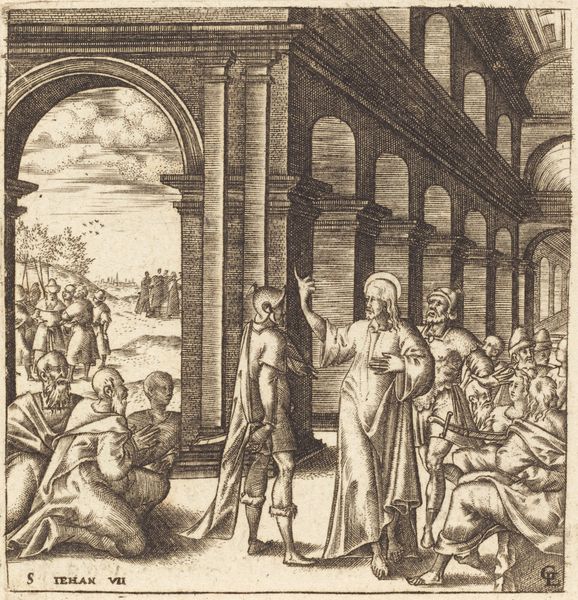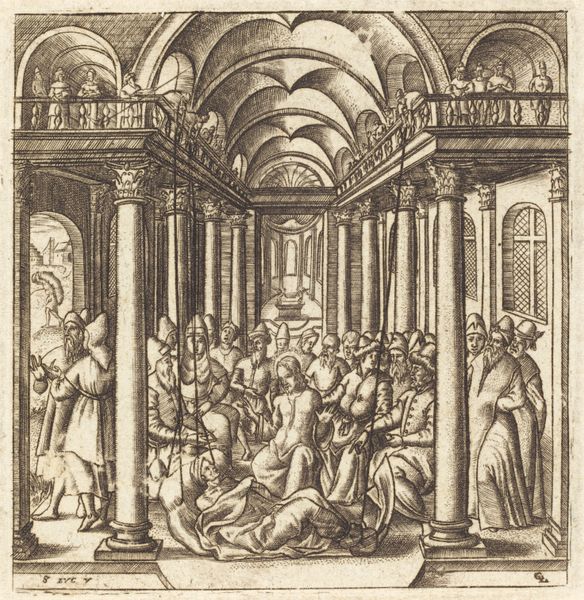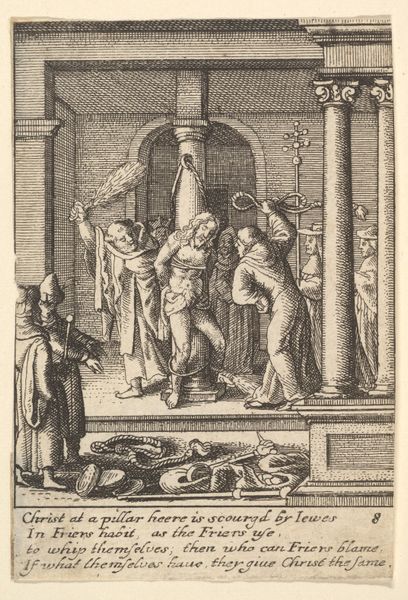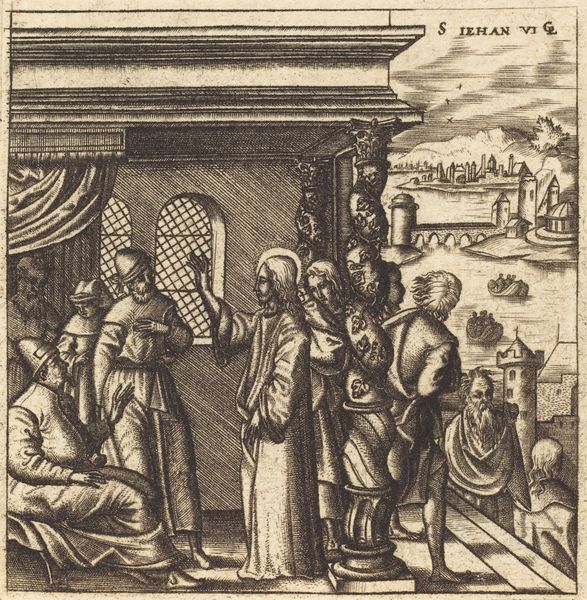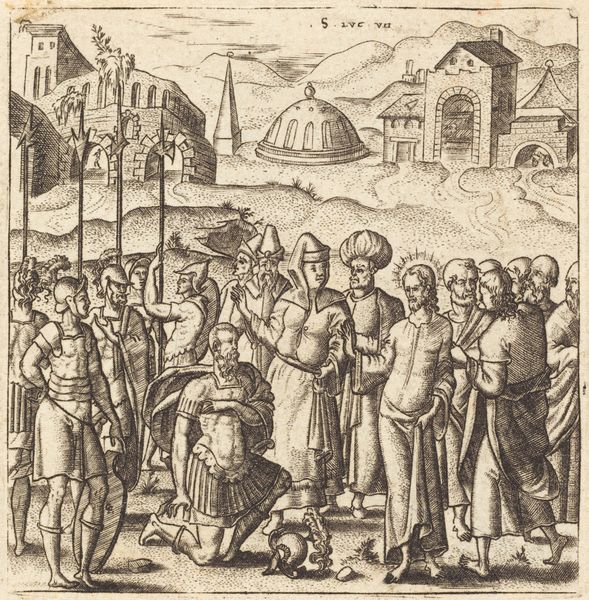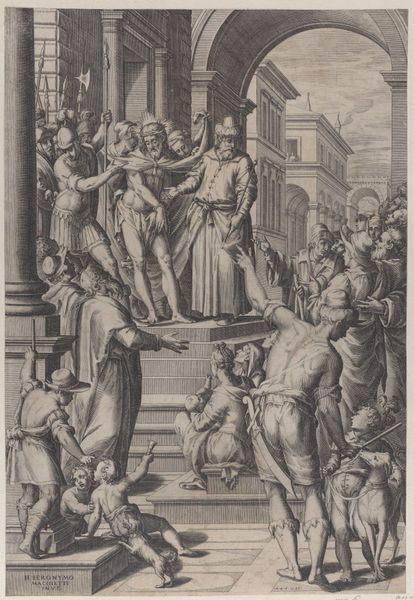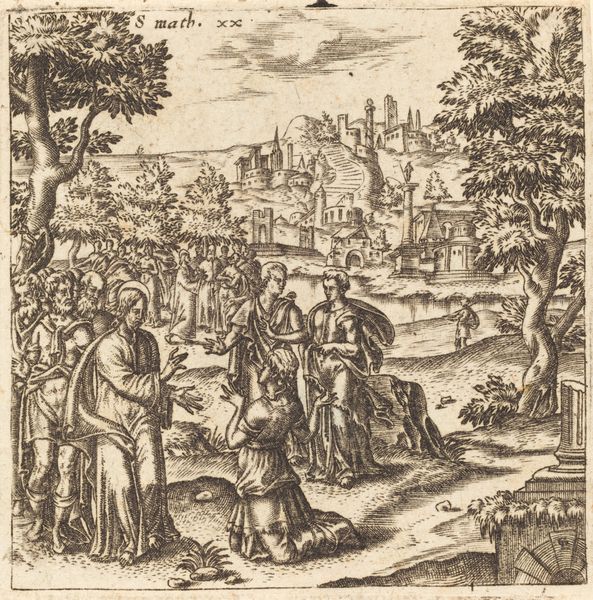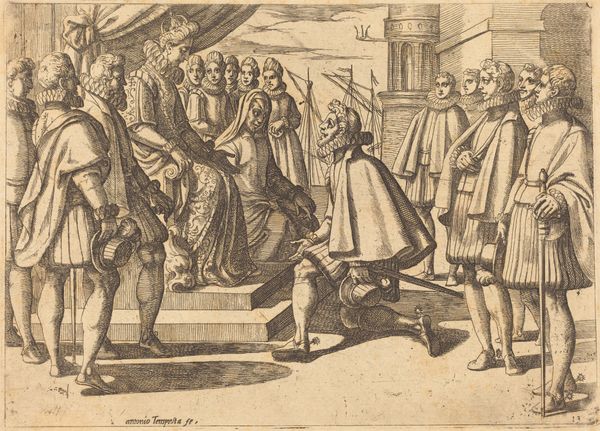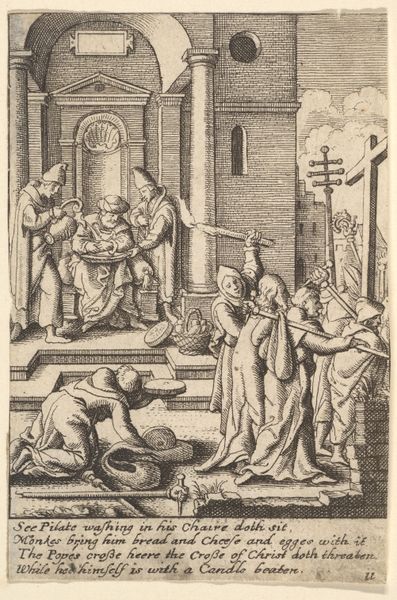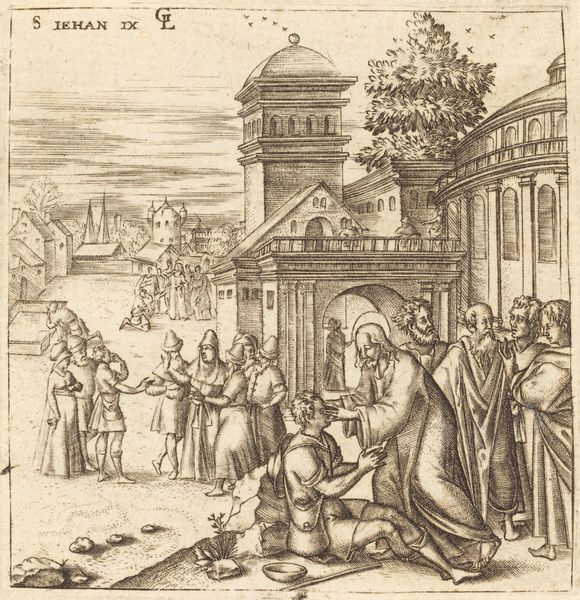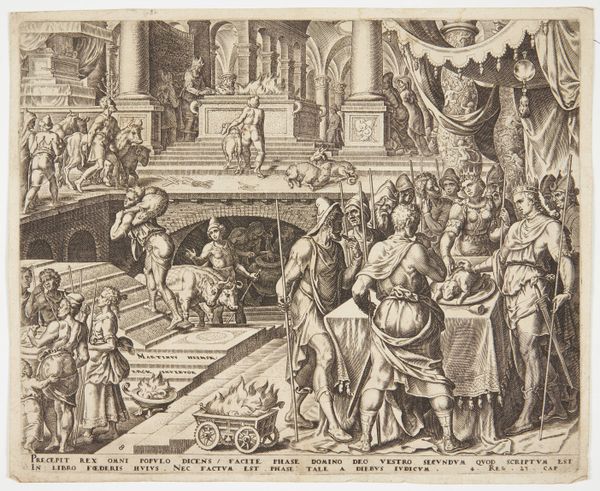
print, engraving
#
narrative-art
# print
#
mannerism
#
figuration
#
history-painting
#
engraving
Copyright: National Gallery of Art: CC0 1.0
Editor: This is Leonard Gaultier’s "Christ in the Temple," an engraving dating from around 1576-1580. The architecture is fascinating, almost like a stage, but the figures feel chaotic. It looks like they are protesting something that Christ is saying, almost surprised. What's your read on this? Curator: The print captures a pivotal narrative, doesn’t it? We see Christ challenging the norms within the temple. I'd highlight how Gaultier’s Mannerist style, popular at the time, uses crowded compositions to showcase the intensity of such public, religious events. What statement do you think Gaultier wanted to make with this print? Editor: It definitely captures conflict, doesn't it? The body language looks really aggressive, even for such a small-sized piece. I am interested in knowing if the piece aims at commenting about the establishment. Curator: Absolutely! Dissemination of these printed images played a key role. They were designed for a wide audience, offering them a visual interpretation, a commentary on religious authority. It provokes questions about religious law, commercial practices, and Christ’s disruptive role. Think about it, what’s the purpose of distributing imagery, and who decides on the “right” image? Editor: It’s interesting how this relatively small print could spark such a discussion on such a large scale! The scale of imagery here clashes a lot with its underlying theme. Curator: Exactly! Understanding art means analyzing how its dissemination influences beliefs, shapes public perception and constructs authority! What have you learned here today? Editor: That the print's effectiveness as social and religious commentary rests on the relationship between its imagery, the culture from which it came, and the people it aimed to influence. It made me realize how political a single image can be! Curator: Precisely. Prints allowed for an image to speak for itself in ways that were deeply intertwined with social history and perception of power, at a specific moment in time!
Comments
No comments
Be the first to comment and join the conversation on the ultimate creative platform.

